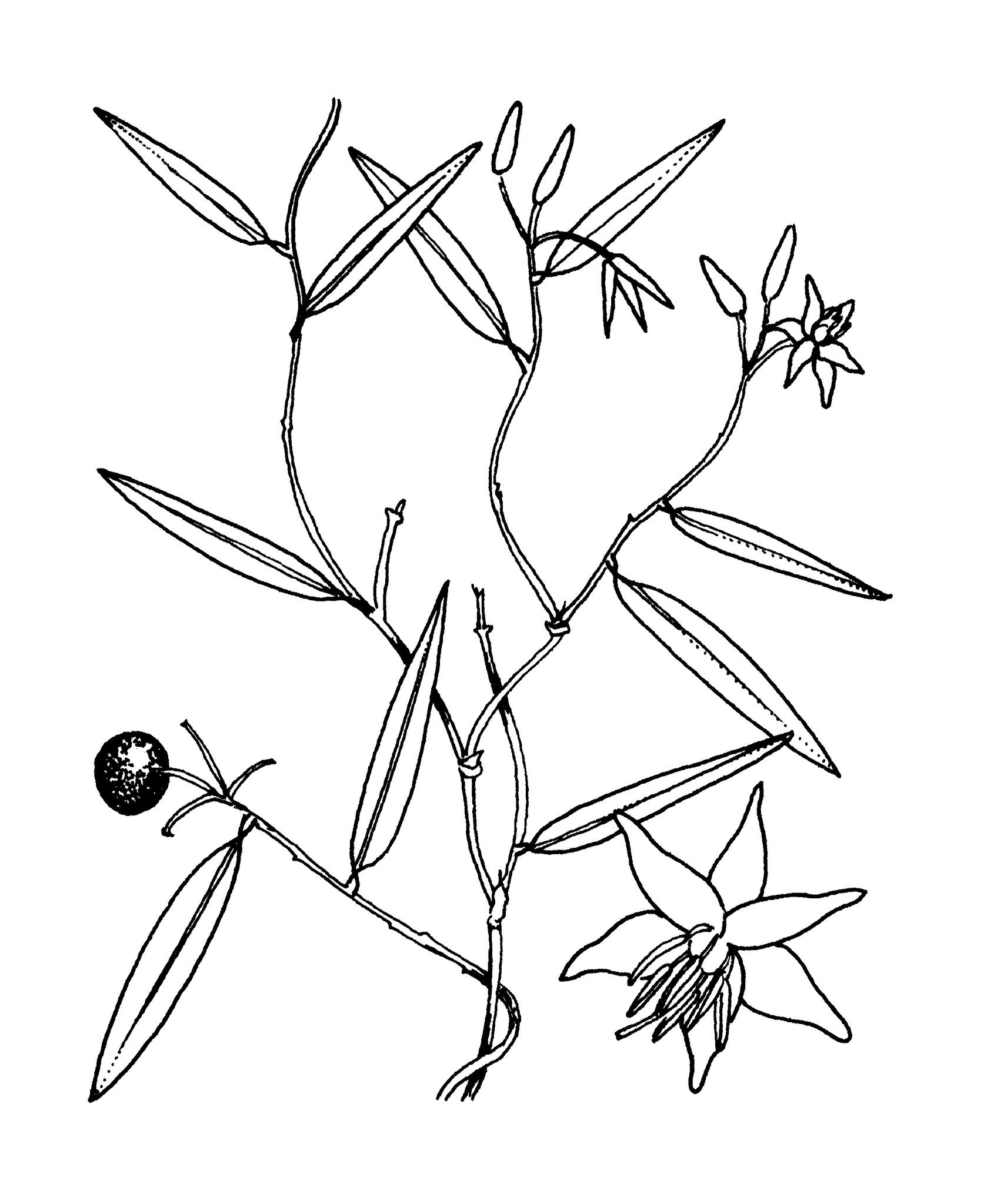
Greek geiton – neighbour, plesios – near, referring to its superficial resemblance to the genus Eustrephus (at that time placed in Luzuriaga) to which it was thought to be related.
Perennial, rhizomatous more or less woody vine. Stems twining, much branched, perennial. Leaves numerous, linear to broadly ovate, leaf bases inverted. Flowers lasting only one day, spreading, radially symmetrical, not twisting after flowering, stalked, individual flower stalks articulated. Inflorescence a terminal cymose panicle.Tepals 3+3, free. Stamens 6, free. Ovary superior. Fruit a berry. Seeds ovoid, black, without arils.
Grown for the foliage, flowers and colourful berries.
A single variable species from Australia, SE Asia and extending to the Pacific.
The vine habit; tepals not twisting after flowering; black berries.
Laferrière (1996).
Source: (2005). Hemerocallidaceae. In: . Horticultural Flora of South-eastern Australia. Volume 5. Flowering plants. Monocotyledons. The identification of garden and cultivated plants. University of New South Wales Press.
